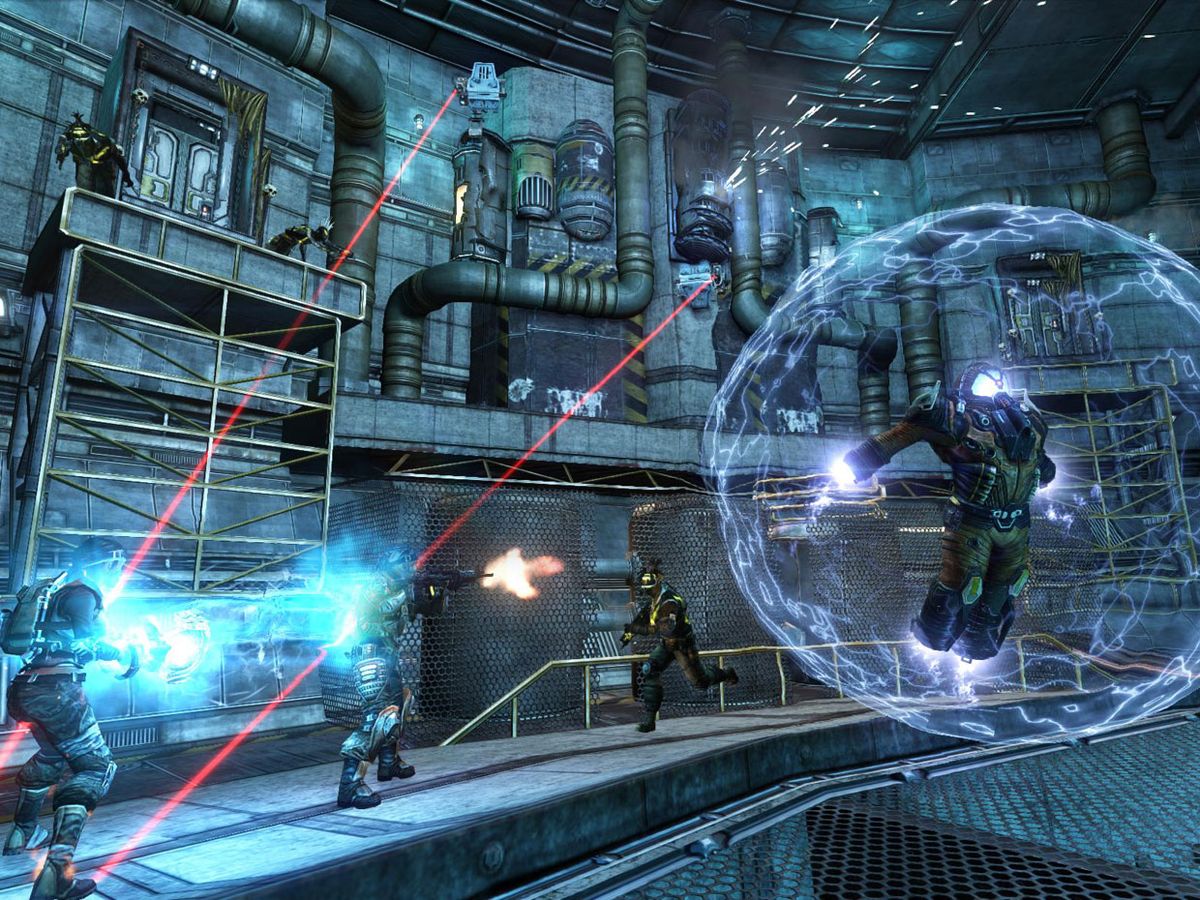It’s not unusual for a science fiction television show to spin off a video game. What is unusual is linking the show and the game together on an ongoing basis, with plot elements and characters from each crossing over to the other. In April, gaming company Trion Worlds and the Syfy cable television channel will unveil Defiance, the first such crossover massively multiplayer online game (MMO) and TV show.
The setting of Defiance is a postapocalyptic Earth, where humans and aliens attempt to coexist while struggling for survival. The project has taken nearly five years and US $100 million to develop, because the game and show were created concurrently. Usually, either a game or show simply licenses the intellectual property for reuse in the other medium.
Complicating matters for Trion’s game programmers was developing an MMO system that could allow players to choose from three gaming platforms: the Xbox 360, the PlayStation 3, and the PC. The goal was to reach the largest possible audience of players and television viewers. Unfortunately, the older console technology can’t handle real-time, high-quality rendering of multiple players as easily as modern PCs can, a problem that has stymied other developers: When Trion began the project, only three MMO games existed for both consoles and PCs, plus several aborted attempts.
“A standard console game might have four players,” says Rob Hill, a senior producer at Trion. “An MMO might have 1000 players existing in the same game space…. You have to be able to render all those characters on screen. You can’t have players not go into an area because it’s reached a maximum number.” To cope with large numbers of players, modern PCs can use several gigabytes of RAM. But both the Xbox 360 and PlayStation 3—which were launched in 2005 and 2006, respectively—are fitted with just 512 megabytes of RAM.
The solution involved some computational sleight of hand. “While there might be hundreds of players in the same space, you don’t load all of them,” adds Hill. “Our software renders several dozen characters and prioritizes them. Things that want to kill you are on high priority, then people in your group, followed by friends, then other random characters.” For players expecting a busy area, “several dozen people on screen still looks really crowded,” says Hill.
Trion uses its own proprietary software to handle the 3-D environments within the game—with an assist from tree-rendering software by Interactive Data Visualization and physics engines from Havok. The Trion software can recognize which platform the player is using and send back results tuned for that platform.
Initially, the Redwood City, Calif.–based Trion and New York City–headquartered Syfy (whose parent company, NBCUniversal Media, is a Trion investor) were looking to see if any of Syfy’s shows could be turned into a game. When none proved broad enough for their purposes, they decided to cocreate one.
The game, which will cost $60 to start playing, debuts 2 April and takes place in a future San Francisco. Some of the TV show’s lead characters will also start their journeys there before making their way to Defiance (on the site of present-day St. Louis), where the show, which premieres 15 April, is set. Characters from the show will continue to occasionally appear in the game. And there’s talk of characters that prove popular in the game making their way to the show.
“In one of the episodes of the show, we have an [alien] doctor who figures out there’s a contagion spreading that could doom Defiance,” says Hill. “She reaches out to her counterpart in the game in San Francisco. The players in the game will have a series of missions they can fulfill to help the doctor in San Francisco create the cure. The time pressure on the players is they need to do it before next week’s episode airs.”
Finding a happy medium between the very different development processes of video games and television shows proved as tricky in its own way as making the game work on different platforms. “Early on, the TV side doesn’t really think about what it’s going to look like; they care more about the characters,” says Hill. “ We have to figure out what it looks like early, because we have to build a gigantic world.” The result was that Trion had to work with SyFy “about what the world and characters would look like two to three years before they would normally have started thinking about it,” Hill adds.
Trion, for its part, had to limit its designs to the realities of television, including tight CGI budgets. “We had to figure out what the TV folks could do physically that was also cost effective,” says Hill. “We could build a character with a bunch of arms, but they couldn’t do a four-armed character every week. They didn’t like main characters with masks or helmets in the game, because they needed to see those actors’ faces on TV.”
But both games and TV shows share one feature: They are both extremely competitive industries with many failures and rare successes. The MMO market is a particularly tough nut to crack, dominated by a few titles such as Blizzard Entertainment’s World of Warcraft, which has 10 million subscribers. Brian Blau, a consumer technologies analyst for Gartner in El Cerrito, Calif., says that ultimately the game’s success will depend on how captivating the game and show are, although he’s intrigued by its novelty.
“Defiance is a really interesting multimedia, transmedia play,” he says. “The simultaneous story development, production, and release can enable users to have a unique relationship to the content,” which could help induce gamers to continue paying their subscription dues, says Blau.
About the Author
Susan Karlin regularly writes about the intersection of pop culture and technology for IEEE Spectrum. In “Electrifying Burning Man” she looked at the use of alternative energy at the famous desert experimental arts festival.





